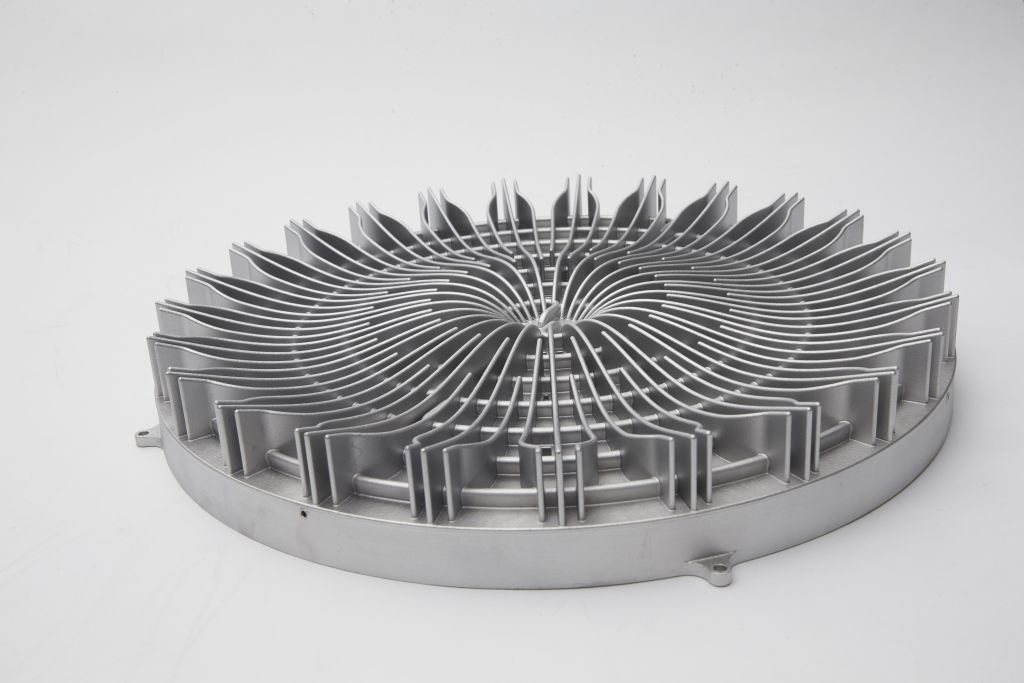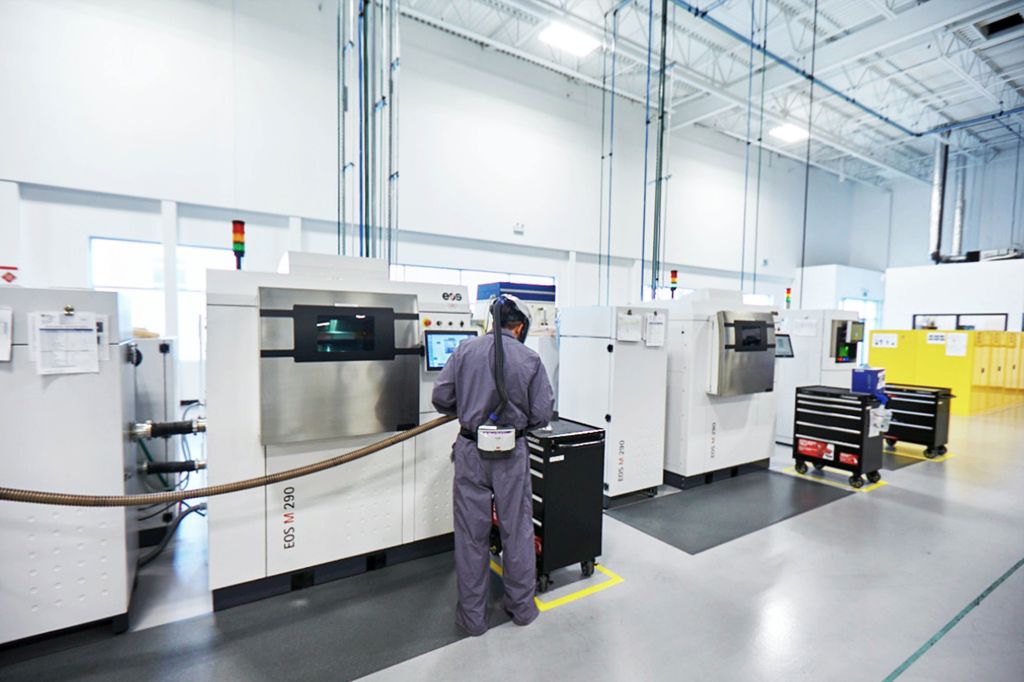The environmental benefits of AM

Jason Ball, vice-president and general manager, Burloak Technologies explains how the latest additive manufacturing techniques are playing a huge role in enabling sustainability to take to the sky.
Faced with mounting societal and economic pressures and incentives to ‘go green’, today’s manufacturers are racing to implement new approaches and innovations to enhance the sustainability of their products, processes and supply chains. While this shift is pervasive across a number of industries, it is particularly pronounced in the aviation sector.
If you have attended an aerospace tradeshow in the past two years, you will undoubtedly have noted that the conversation has become increasingly focused on innovative and emerging solutions to help the aviation sector become a zero-emission industry by 2050. Beyond futuristic developments, such as sustainable aviation fuel (SAF), engine efficiency and hydrogen powered flight, these discussions have evolved to include low emission manufacturing approaches, eco-friendly supply chains and the emergence of cutting-edge new and lighter materials.

Unsurprisingly, this has thrust additive manufacturing (AM) onto centre stage – with an increasing number of industry players gravitating toward the inherently eco-friendly aspects of AM. These sustainability benefits can be realised at the component level, on the manufacturing floor and across the supply chain – helping aviation manufacturers to reduce the environmental impact of their products and operations, with the added benefit of cost effectiveness in many cases. Let’s take a closer look at some of the top sustainability benefits of AM.
Reduced waste
At the component level, AM uses far fewer resources than subtractive manufacturing – drastically decreasing the amount of waste generated when manufacturing metal parts. This is because, unlike subtractive manufacturing which removes material to create a form, AM builds a component from the ground up – using only the required materials.
Additionally, AM allows manufacturers to build parts entirely on-demand – only creating the components they need when they need them. This right-sizes production and drives a significant reduction in the need to purchase, manage and store inventory. It also serves to eliminate obsolete, scrap and surplus materials and parts.
Not only does the comparative lack of waste in the AM process deliver significant benefit for the planet, it also has a positive impact on a manufacturer’s bottom line. In fact, I believe that these combined attributes have played a role in the aviation sector’s early and enthusiastic adoption of AM solutions.
Lightweight parts
The next major benefit of AM from a sustainability standpoint is component lightweighting. And while I would argue that this is the primary attribute most people are familiar with, I can attest that when the Burloak Technologies team showcases AM parts at tradeshows, people are genuinely taken aback by the significant decrease in weight in comparison to traditionally manufactured components.

The lightweighting properties of AM are particularly advantageous to the aviation sector – where sustainability is nearly synonymous with lightness. The lighter the plane, the more fuel efficient and less emission-heavy it is. Leveraging expert 3D printing techniques and innovative and varied material selection, Burloak has helped our aviation customers to achieve significant component weight reductions. Extrapolate that lightweighting potential across the various metal components found on an aircraft – from brackets and valves, to pumps and rotors, to heat exchangers, fuel nozzles, sensor housing units and other intricate assemblies – and the numbers can become quite impressive. One 2015 report suggested that if used to their full potential, AM components could reduce the weight of a commercial aircraft enough to achieve a noteworthy reduction in fuel consumption over its 30-year lifespan.
When it comes to component lightweighting with AM, it’s important to note that absolutely nothing is sacrificed in the process from a quality, durability and reliability perspective. That’s because AM enables us to build highly complex and extraordinarily unique shapes. We can even consolidate multiple components into one lighter, streamlined unit with fewer joints and connection points – ultimately producing stronger, more durable, high-performing parts that are built to stand the test of time.
Supply chain efficiency
By nature, AM is a low emission process that can help to reduce the environmental footprint of an OEM’s supply chain in a number of ways. Currently, continuity of supply, the re-shoring of critical parts and localised, lower-risk component solutions are at the top of most companies’ agendas in a post-pandemic world. AM presents a significant opportunity to build greater resilience and environmental sustainability into the supply chain – ensuring production occurs only when and where required, using far fewer raw materials and by engaging only a small number of supply chain partners.
By relying only on metal powder, digital files and local production capability, the on-demand model of AM significantly cuts back on the global shipment and transport of raw materials, components and finished goods – reducing the greenhouse gas emissions generated by ground, air and other methods of transportation required to move traditionally manufactured raw materials and products along the value chain.
Given these benefits, perhaps it is no surprise that an increasing number of aviation OEMs and suppliers are seeking out proven AM partners to deliver localised component solutions closer to the point of use, while ensuring compliance with rigorous industry requirements including ITAR, Nadcap, CGP and ISO quality standards. Today, Burloak can support global companies by providing localised, sustainable North American AM solutions via our vertically-integrated centre of excellence in Canada and production facility in the US.
In closing, while there are many attributes of AM that support aviation OEMs’ environmental sustainability goals, we have only scratched the surface in this article. Dig deeper and you will discover that design for AM (DfAM), reduced tooling and prototyping requirements and decreased factory emissions and more, round out the compelling sustainability drivers of this emerging manufacturing approach.
As a strategic AM partner, the Burloak team is excited to see the environmental benefits of AM becoming a more prevalent value driver and topic of discussion in the aviation sector.
Over the next few decades, innovation in commercial aviation sector will largely be driven by the industry’s collective drive to reach its aggressive zero-emission target – a long road requiring the support of every player in the ecosystem. I’m confident that the AM industry will play an important role in this shift, further motivated to develop new and exciting ways to reduce carbon footprint and contribute to a circular economy that considers everything from materials sourcing and selection, to manufacturing processes and equipment, to logistics and component end-of-life and recycling as we collectively work towards the green future of aviation.











